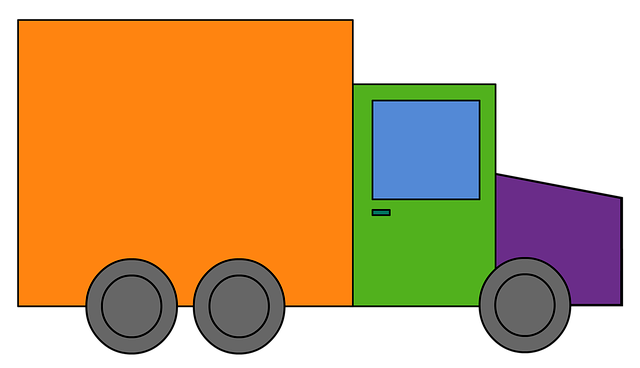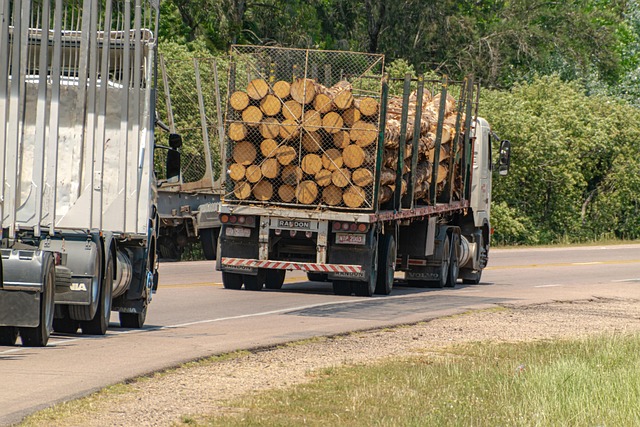Looking to register your car in California? This comprehensive guide walks you through the entire process, ensuring a smooth experience. From understanding crucial requirements for car registration in California to navigating the essential step of VIN verification, we’ve got you covered. By gathering the necessary documents and completing the VIN check, you’ll be on your way to choosing the right registration type and submitting your application with ease.
- Understand California Car Registration Requirements
- Gather Necessary Documents for VIN Verification
- Perform Vehicle Identification Number (VIN) Check
- Choose an Appropriate Car Registration Type
- Submit Application and Pay Fees to DMV
Understand California Car Registration Requirements

Before registering your car in California, it’s crucial to understand the state’s specific requirements for vehicle identification number (VIN) verification. The process involves ensuring that your vehicle meets all necessary safety and emissions standards. A mobile VIN verifier or inspector can play a vital role here by performing an on-site inspection to confirm these criteria. This step is essential as California has strict guidelines to ensure road safety and environmental protection.
During the registration process, you’ll need to present a valid VIN inspection report, which can be obtained through a professional mobile VIN inspection service. This documentation verifies that your car’s make, model, and year meet California’s legal standards. By adhering to these requirements and utilizing services like a mobile vin verifier, you’ll streamline the registration process and ensure your vehicle is compliant with state regulations.
Gather Necessary Documents for VIN Verification

Before you begin the registration process in California, it’s crucial to gather all the essential documents for VIN (Vehicle Identification Number) verification. This step is a critical part of ensuring your vehicle complies with state regulations. You’ll need the following items:
1. A valid driver’s license or state ID card.
2. Proof of insurance that meets California’s minimum requirements.
3. The certificate of title, which you can obtain from the previous owner if applicable.
4. A completed and signed California Vehicle Registration Application form.
5. The vehicle’s VIN, typically found on a plate attached to the dashboard or door frame. For convenience, many individuals opt for a mobile vin inspection or use a mobile vin verifier to streamline this process.
Perform Vehicle Identification Number (VIN) Check

Before registering your car in California, performing a Vehicle Identification Number (VIN) check is a crucial step. This process involves verifying the VIN to ensure it matches the vehicle’s actual make, model, and year. It’s an essential step in preventing fraud and ensuring that you’re registering the correct vehicle. You can conduct this vin verification through various methods, including using a mobile vin verifier or conducting a simple inspection yourself with the vehicle’s registration papers and identification documents.
A mobile vin verification service can be particularly convenient for California residents. These services send a specialist to your location to perform a comprehensive VIN inspection. Alternatively, you can do it yourself by cross-referencing the VIN on official databases after obtaining the necessary paperwork from the previous owner. This double-check ensures that all details are accurate and helps streamline the registration process at the California Department of Motor Vehicles (DMV).
Choose an Appropriate Car Registration Type

When registering your car in California, selecting the right registration type is key to a smooth process. Different types cater to various vehicle categories and ownership scenarios. For instance, if you’re a first-time registrant or switching from out-of-state plates, the “New to California” option is suitable. This path often involves a thorough inspection, including VIN (Vehicle Identification Number) verification, ensuring your car meets all safety and emissions standards.
A mobile VIN verifier can facilitate this process by providing on-site inspections and instant digital reports, especially convenient for those with busy schedules or challenging access to traditional inspection facilities. Alternatively, a conventional vin inspection at a designated DMV office is also an option. This method may take longer but ensures all legal requirements are met. Remember, the right registration type saves time, effort, and potential penalties down the road.
Submit Application and Pay Fees to DMV

To officially register your car in California, the next step after gathering all necessary documents is to submit an application and pay the required fees at the Department of Motor Vehicles (DMV). This process involves completing a Vehicle Registration Application form, which can be obtained online or in person. Ensure all information is accurate and up-to-date, including your personal details, vehicle make and model, and unique Identifier Number (VIN) — a critical piece of data that undergoes vin verification during the registration process to ensure authenticity.
Along with your application, you’ll need to pay the registration fees, which vary based on your vehicle’s type and age. A mobile vin verifier or inspector can be useful here as they can facilitate the VIN inspection process by providing instant, accurate readings, ensuring a smoother transaction at the DMV. Remember to keep all relevant receipts for future reference and proof of registration.
Registering a car in California involves understanding specific requirements, gathering essential documents for VIN verification, performing a vehicle identification number (VIN) check, selecting the right registration type, and submitting applications along with fees to the DMV. By diligently navigating these steps, you can ensure your vehicle’s legal status and enjoy a seamless ownership experience in the Golden State. Remember, accurate documentation and compliance are key during the car registration process for California residents.
